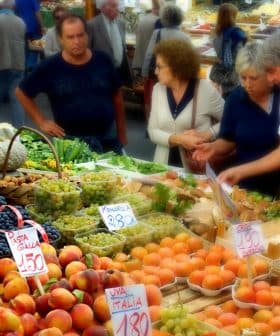In Italy, Extra Virgin Olive Oil Prices and the Popularity of Large Food Retailers on the Rise
Italian families are spending more on all types of oils, including extra virgin olive oil, with a 15.5 percent growth in consumers’ expenses for vegetable oils and fats. The rise in expenses is attributed to the increasing prices of seed oils, impacting overall consumer expenditure in the country.
A new report found that Italian families are spending more on all types of oils, including extra virgin olive oil, than they had in recent years. The latest market analysis published by the Institute of Services for the Agricultural and Food Market (Ismea) highlighted a 15.5 percent growth in consumers’ expenses for all categories of vegetable oils and fats.
The new report also said that consumers’ expenses in the country have grown by 11.1 percent overall in the first nine months of 2022.
According to the report’s authors, such an increase is mostly due to the rising prices of seed oils (up 33 percent), whose supply is highly affected by the Russian invasion of Ukraine.
The still-high level of inflation affects a family’s expenditure capacities. Additionally, high-quality extra virgin olive oils have seen a reduction in volume, which has dropped 3.9 percent since 2021.
See Also:Olive Oil Production NewsIn the same period, as a consequence of the rising prices, overall extra virgin olive oil expenditures have grown 11.6 percent.
Interestingly, more families have chosen to buy their groceries from large retailers (up 2 percent) in 2022. These retailers often promote extra virgin olive oils at lower prices as a means to attract consumers.
Between 2019 and 2022, small traditional food shops have seen a decrease in customers from 12 to 10 percent. Locally produced, high-quality EVOO is often sold on the shelves of such venues.
According to Ismea, in the first nine months of 2022, extra virgin olive oil represented 0.9 percent of a consumer’s overall food expenditure.
The report explained that the change in buying habits is most pronounced among newly formed families with very young children. From 2019 to 2022, this group’s food expenditure dropped 13.7 percent. According to Ismea, challenging economic conditions have forced many such families to introduce cost-saving strategies, as the rising cost of house loans, bills and childcare greatly affect all other expenses, food included.
However, a decrease in the popularity of online grocery shopping could be a hopeful sign for small, local retailers. The worst period of the COVID-19 pandemic caused extraordinary growth in the online shopping sector. Yet, Ismea’s report showed that while online volumes remain 80 percent higher than in 2019, six percent fewer customers shop online in 2022.









